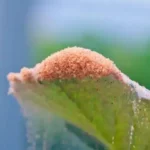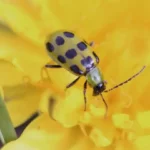If you’ve noticed your garden or crops suffering and can’t pinpoint the cause, grasshoppers might be the culprits. You’re likely seeking solutions to protect your plants from further damage, and you’re not alone in this struggle. So, if you’ve ever pondered, are grasshoppers bad for plants, understanding the impact of these small but destructive insects can help you mitigate their damage and be incredibly helpful as you fight back.
Grasshoppers can devastate plants, especially in large numbers. They are voracious feeders and can quickly consume large quantities of plant foliage, leading to significant damage. Grasshoppers typically feed on plants’ leaves and stems but can also feed on flowers, fruits, and vegetables. In severe infestations, grasshoppers can defoliate plants, stunt their growth, and even kill them.
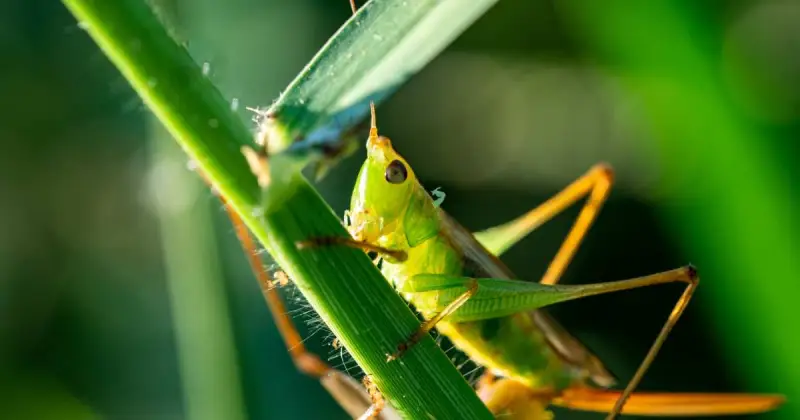
If you’re curious about how to safeguard your garden from grasshoppers’ relentless appetite, you’re in the right place. In this article, we’ll explore the extent of the damage these insects can inflict and discuss practical strategies to keep their population under control.
From natural deterrents to more targeted interventions, you’ll discover various options to help ensure your plants thrive despite grasshoppers’ threats. Keep reading to arm yourself with the knowledge needed to protect your greenery.
Humble Highlights
- Discover the staggering environmental impact of the humble grasshopper AND how to protect your greenery from these hungry pests so you can prevent further damage and restore the integrity of your backyard garden.
- Save time with these unusual but effective natural, organic, and eco-friendly control methods so you can reduce grasshopper populations AND even minimize the risk of future infestations.
- Save money with these preventative measures you can take today to help stop these hungry pests from invading your garden so you can reduce the need for synthetic chemical pesticides in your garden, benefiting the environment and reducing potential harm to beneficial insects
Negative Impact Of Grasshoppers On Plants
Grasshoppers harm plant life by consuming vast amounts of vegetation daily, constituting a significant risk to garden well-being. These insects possess an enormous appetite and can consume up to half their body weight in plant matter daily. Consider a single grasshopper, which can eat 16 times its body weight.
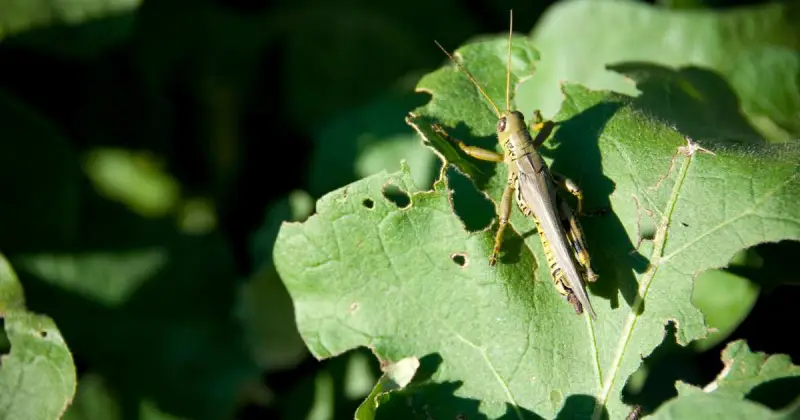
When their numbers surge, they can completely strip fields, causing severe damage to crops and gardens. In the western regions of the United States, these pests may eat up to a quarter of the available plant material every year, greatly affecting agricultural productivity.
It is essential to manage grasshopper populations to protect garden plants and ensure a balanced ecosystem. Recognizing the harm these insects inflict and implementing measures to control their population is critical to safeguarding our vegetation. Vigilance and effective strategies are crucial to reduce the detrimental effects of grasshoppers on plants. 1
One lesser-known way grasshoppers can destroy a vegetable garden is by transmitting plant diseases. While feeding on plants, grasshoppers can pick up pathogens from infected plants and transmit them to healthy plants as they feed.
This transmission can spread diseases such as bacterial wilt, aster yellows, and viral diseases, which can devastate a vegetable garden.
Additionally, grasshoppers’ physical damage can create entry points for pathogens, further increasing the risk of disease transmission.
Plant Damage Caused By Grasshoppers
Grasshoppers significantly impact vegetation by consuming large amounts of plant material. These insects can defoliate entire fields, removing leaves and vital nutrients. In the western regions of the United States, grasshoppers are responsible for consuming up to a quarter of the forage each year, leading to considerable plant damage and economic losses.
A notable study demonstrated grasshoppers’ high consumption rate, revealing that 6-7 adults per square yard in a 10-acre pasture could eat as much as one cow. Given that grasshoppers can eat about half their body weight daily, they represent a significant threat to vegetation. Infestations can quickly become severe without proper management, resulting in extensive damage. 2
Even a modest number of these pests can be detrimental. Research indicates that just ten adult grasshoppers per square yard can significantly damage rangeland.
Although there are sufficient solutions to effectively combat grasshoppers, they may be difficult to control because they are mobile and can quickly move from one plant to another. When treating, it’s best to try different solutions and stay vigilant.
Economic Consequences Of Grasshopper Infestations
Due to their intense feeding behavior and quick plant consumption, grasshopper invasions can have severe economic impacts. In regions like the western United States, these pests can consume up to a quarter of the forage yearly, causing significant financial losses.
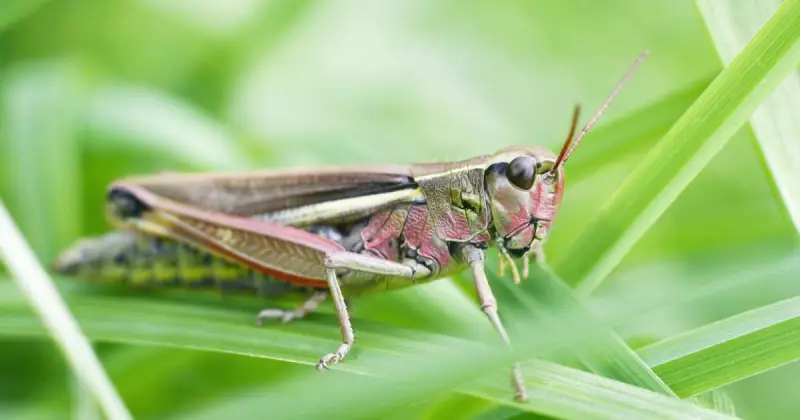
Remarkably, 6-7 adult grasshoppers in a square yard over a 10-acre area can eat as much as a cow. Their ability to consume approximately half their body weight in vegetation daily enables them to strip plants bare during significant outbreaks. 3
The financial repercussions of grasshopper infestations on forage output and plant health highlight the necessity of implementing control strategies to reduce these effects.
Effective Control Methods For Grasshoppers
In managing grasshopper populations in gardens, it’s crucial to leverage natural predators that help regulate their numbers. Moreover, using organic deterrents such as garlic sprays and manual removal methods can significantly mitigate plant damage. Implementing a varied strategy combining these approaches enhances the effectiveness of controlling grasshopper infestations.

Natural Predators Of Grasshoppers
Birds, wasps, and ground beetles effectively control grasshopper populations in gardens. These predators are essential for maintaining balance in ecosystems by preying on grasshoppers.
Additionally, spiders, praying mantises, and snakes help regulate grasshopper numbers. Attracting insect-eating birds to your garden can diminish the impact of grasshoppers on your vegetation. 4
Promoting biodiversity in your garden is crucial for creating a habitat where these predators can flourish. Introducing beneficial insects such as ladybugs and lacewings helps manage grasshopper populations without using harsh, synthetic chemical pesticides.
Utilizing these natural predators offers an eco-friendly method to protect your plants from grasshoppers.
One lesser-known natural way to kill grasshoppers in the garden is using a molasses spray. Molasses is sticky and coats the bodies of grasshoppers, making it difficult for them to move and eventually suffocating them.
To make a molasses spray, mix 1 part molasses with 10 parts water and spray it directly on the grasshoppers. This method can help control grasshopper populations, primarily along with other control methods.
Organic Repellents For Grasshoppers
Employing organic methods offers an environmentally friendly solution to manage grasshopper populations in gardens. The following techniques are effective in safeguarding your plants:
- Garlic Solution: Harness garlic’s natural sulfur and allicin to create a deterrent spray.
You’ll need 2 bulbs of garlic, 1 quart water, and 1 teaspoon of liquid dish soap. After crushing the garlic, add to water and let it steep overnight.
Strain the garlic water into a spray bottle and add a teaspoon of liquid dish soap which helps the mixture adhere to the grasshoppers’ bodies, suffocating them.
While garlic spray is effective, it may also repel beneficial insects, so use it carefully and considerately in your garden.
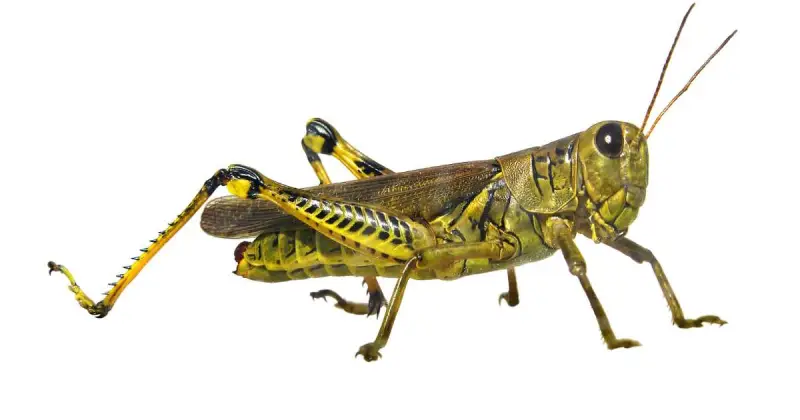
- Pepper Wax: Coat foliage with spicy pepper wax to repel grasshoppers, providing a protective layer they find distasteful.
- Neem Oil Application: Implementing Neem oil-based organic pesticides can dissuade grasshoppers, preventing them from harming your garden.
You’ll need 1 quart of warm water, 1 teaspoon of Neem oil, and 1/2 teaspoon of liquid dish soap. Combine the warm water and Neem oil in a spray bottle, add dish soap, and shake well. Spray the Neem oil mixture directly onto the grasshoppers and on plants where grasshoppers are present.
This solution works by disrupting the grasshoppers’ hormonal balance, which leads to reduced feeding and reproduction—great news when you’re looking to cultivate delicious vegetables. The dish soap helps the mixture adhere to the grasshoppers’ bodies, ensuring better coverage.
Repeat the application every few days or after rain, as Neem oil may wash off easily. As with any pesticide, follow the Neem oil product label instructions and avoid spraying on windy days to prevent the oil from drifting onto beneficial insects.
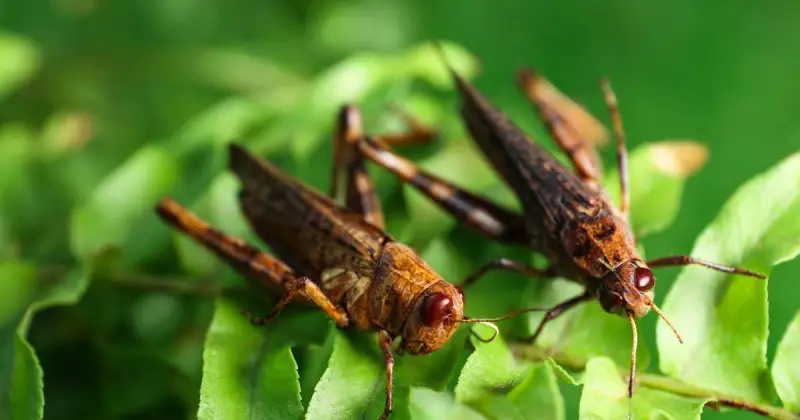
Cultural Control Practices
Adopting cultural control strategies is crucial for managing grasshopper populations in gardens effectively. Introducing certain vegetables like squash, tomatoes, and peas can deter these insects.
Floating row covers, rototilling during spring, and planting tall grass can be effective measures against grasshoppers. Moreover, organic treatments such as the previously mentioned garlic spray, hot pepper wax spray, Neem oil, and Nolo Bait can also be beneficial in controlling grasshopper infestations. 5
The humble grasshopper may look relatively innocent, yet it is known for its insatiable appetite. It will feast on your crops like it’s going out of style, especially if your region experiences a wetter-than-normal spring. Check out the informative video below, which provides several excellent methods for protecting against these garden pests and discovering how you can reduce their numbers in your green space.
Preventive Measures Against Grasshopper Damage
To protect your plants from grasshopper damage, installing physical barriers such as metal mesh, chicken wire, netting, mulch, raised garden beds, trenches, and sticky traps can effectively prevent access.
Another strategy involves using trap crops, which are plants that attract pests away from the main crop. They serve as sacrificial plants to protect more valuable plants. By planting sunflowers and zinnias around the perimeter of your garden, you’ll help lure grasshoppers away from primary garden vegetation, acting as a natural diversion. 6
Encouraging the presence of natural predators, including birds and wasps, in your garden can help manage the grasshopper population. These predators consume grasshoppers, helping to control their numbers and minimize plant harm.
Lastly, be sure to regularly inspect your plants for signs of grasshopper activity and take immediate action when necessary. This step is crucial for preventing significant damage.

Importance Of Managing Grasshopper Populations
Effectively managing grasshopper populations is crucial for protecting garden plants and crops from extensive damage. Elevated levels of grasshoppers can cause significant harm to vegetation, as each can consume a substantial amount of plant matter daily.
In the western United States, these insects eat up to 25% of the available forage yearly, presenting a significant risk to agricultural productivity. The impact on rangeland can be particularly severe, with just ten adults per square yard potentially leading to economic losses.
Implementing effective control strategies is necessary to safeguard vegetation from such destruction. As previously mentioned, employing row covers, organic baits, and botanical insecticides can help prevent and manage infestations. 7
Conclusion
Grasshoppers pose a real challenge to our plants. They can eat an amount equal to their body weight daily, which emphasizes the importance of taking action to control their population.
We must adopt effective control strategies and preventive measures for the health of our crops and gardens. This approach not only helps minimize the damage caused by these pests but also ensures the well-being and prosperity of our plant life.
Implementing various natural strategies helps protect your garden from grasshopper infestations and promotes a thriving environment. As we strive to protect our green spaces, let’s remain vigilant and proactive, drawing encouragement from our collective efforts to maintain the balance and beauty of our natural surroundings.
Have you rid your garden of grasshoppers? We’d love to know how you achieved success. Perhaps it was one of the methods we’ve mentioned in this article or maybe it was something else entirely. Drop us a line in the comment section below and let your fellow growers know how you drove these pests from your garden.
SOURCES
- National Library Of Medicine, National Center For Biotechnology Information – Control Of Pest Grasshoppers In North America
- Northwest Center For Alternatives To Pesticides – 6 Natural Strategies For Managing Grasshoppers
- Colorado State University, Extension – Grasshopper Control In Gardens And Small Acreages
- Oklahoma State University, Extension – Grasshopper Control In Gardens And Landscapes
- University Of Nebraska, Lincoln – A Guide To Grasshopper Control In Cropland
- University Of Arizona – Managing Grasshoppers
- Iowa State University, Extension And Outreach – Grasshoppers In the Home Garden

